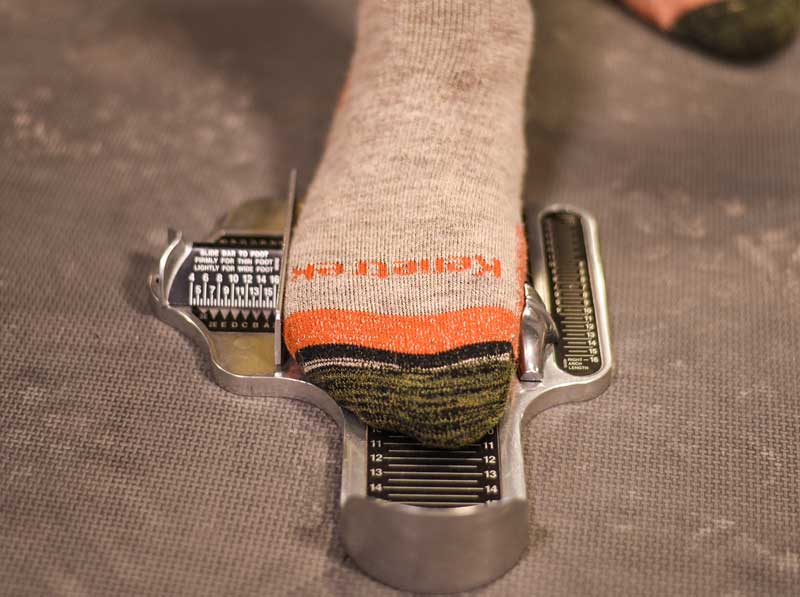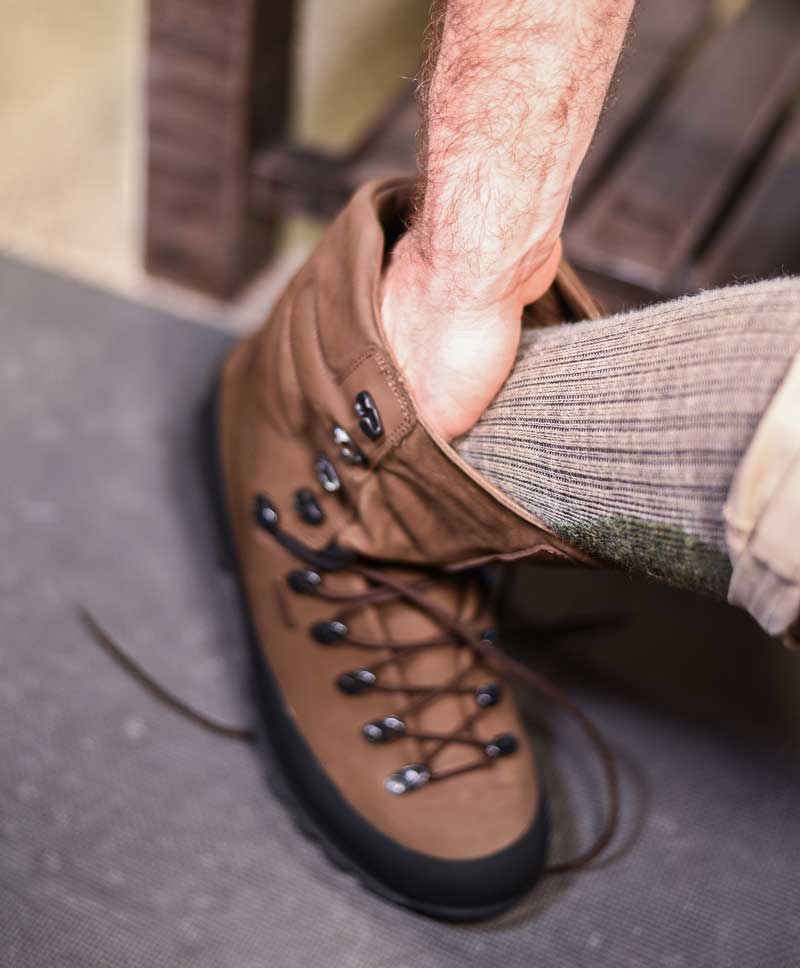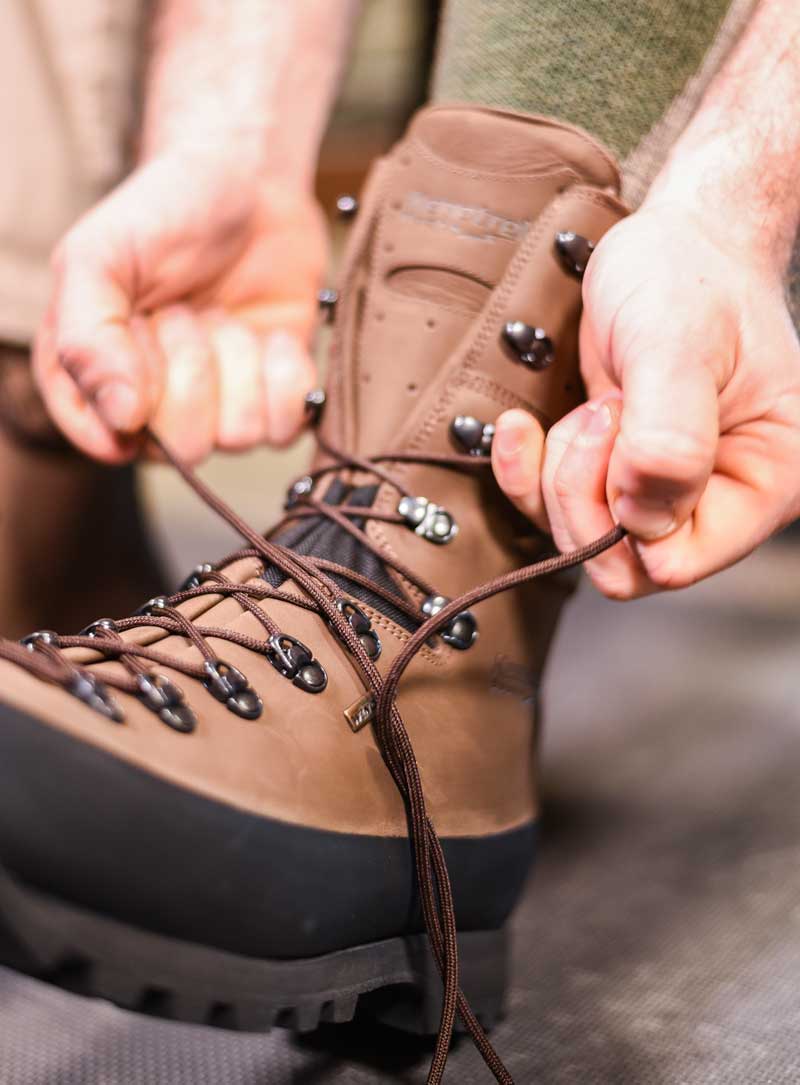With hunting season just around the corner, it is time to get your old boots out and check to see if they have the ability to make it one more year. If not, now is definitely the time to get started breaking in a new pair of boots as well as conditioning your tender feet for the upcoming season.
Buying and breaking in a new pair of boots is something everyone should take very seriously. After all, this is your mode of transportation once you get to the trailhead. If you don’t take it seriously, there is a good chance of that premium tag going to waste. Being broken down with blisters and sore feet is a horrible way to spend your fall.

Make your trip to your local footwear dealer as soon as you can. Have the knowledgeable staff measure your foot prior to trying on anything. The last pair of boots you purchased might have been a 9.5 which fit like a glove.
However, it isn’t uncommon to see your size increase over time and this is the beginning of getting the right fit. Different manufactures sizes tend to be a little bit different as well. The second most important thing is to buy the best quality of boot you can afford.

With your size measurements determined, it is important that you check for adequate toe length by sitting in a chair and putting the boot on but leaving it unlaced. Then slide your foot forward until any part of your toes just touch the end. Don’t smash them forward – just make light contact. Then check for at least a good fingers width behind your heel. This assures when the boots are laced snuggly, you will have adequate toe room in front of your toes – vital when going downhill with weight on your back.
Breaking in a boot is as much about conditioning and toughening your foot as it is getting the boot to break in to your foot. Good boots, such as the Kenetrek Mountain Extreme, that last a thousand miles plus are going to be stiff out of the box. Sheep hunters and hardcore backcountry hunters know the benefit of these stiffer types of boots. They give you great and reduce fatigue in rough terrain.

Starting at least a couple months before your hunt, wear your boots on a daily basis for at least a few hours a day. If you have the ability to wear them all day long without causing major damage to your foot, do it. Once you start to get a hot spot on your foot, it is time to put on some other shoes. The new leather will gradually start to conform to your foot over time, but for now, it will be your foot that gives in. Put some moleskin onto the tender area for your next outing and make sure the edges are trimmed very well. A poorly trimmed moleskin patch with square edges will have a tendency to roll up and cause even more damage. The moleskin will help minimize friction in the boot and will push more on the leather. Make sure you take the moleskin off after each wearing and get plenty of air on the tender area when you aren’t wearing your boots. Every day of wear will get your foot a little tougher and the boot a little more pliable. Once you’ve got a dozen or so miles on the boot during your daily wearing, it’s time to start pushing yourself as well as the boots. Remember, hunting season is just around the corner. Uphill, downhill, sidehill, are all things you are going to experience when chasing that trophy of a lifetime, so make sure you do plenty of each on these weekend outings. Do it the first couple of times with little or no weight on your back. Excessive weight on your back too early in the process can be very unproductive. Make sure you take your moleskin and whenever you feel a hot spot coming on during this break in period, make sure you address the matter immediately. Sweating, hot, wet feet will cause plenty of friction and will make hot spots appear more frequently on this uneven terrain. Taking an extra pair of socks on these outings is must and make sure you take the time to change them half way through your hike. Once you’ve had a few outings like this, it is time to start putting on a load. Extra weight on your back is going to cause more pressure on your heels going uphill and more stress on the toes going downhill which has the ability to cause foot problems with those new boots.
Even the toughest of boots are usually primed and ready for anything once you have 50 plus miles on them. Make sure you condition and take care of your boots according to the manufactures recommendations as well. This will insure your broken in boots will last you a long time. My favorite boots were purchased 6 years ago and they have an estimated 2500 miles on them. However, it is now time to start getting my next pair ready for the future. The addition of a high quality, performance insole, such as the Kenetrek Supportive Insoles, can also make a big difference in initial fit and comfort, making the break in process of a new pair a little bit easier.
Once your boots and feet are broken in and conditioned, don’t think this is the end. When that trophy of a lifetime is two ridges over, you will probably walk harder than you did during your break in period causing you to pull your heel a little harder or the added weight of your backcountry pack will take its toll. Take your moleskin, anti-bacterial treatments, and extra socks with you everywhere you go. Once you feel that hot spot coming on, treat it right away before it becomes a blister. Air your feet every day and keep them clean and change those socks. Even the toughest of guys or gals with well broken in boots will get blisters and hot spots so “expect it”, but if you take proper care of your feet, you will be able to hunt harder and go farther than ever before.
